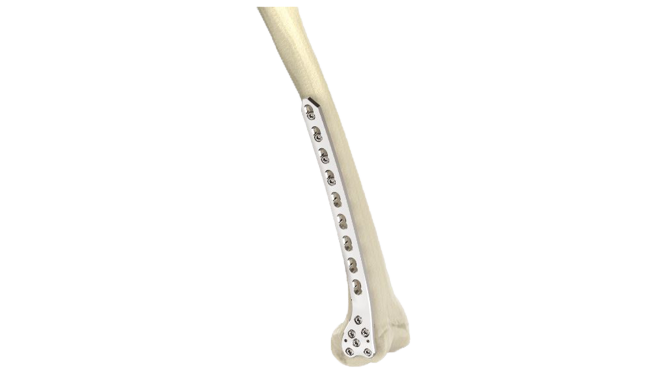Compact Hand Plates - 2.4 mm T-Plate
Product Overview
The 2.4 mm T-Plate Compact Hand Plate is a specialized orthopedic implant designed for precise and versatile use in hand and finger surgeries. This implant offers dependable stability and support, particularly in cases involving fractures, deformities, and other orthopedic conditions affecting the hand. Its "T" shape provides enhanced structural integrity and enables orthopedic surgeons to achieve precise and secure fixation, ultimately promoting the restoration of hand function and reducing discomfort for patients.
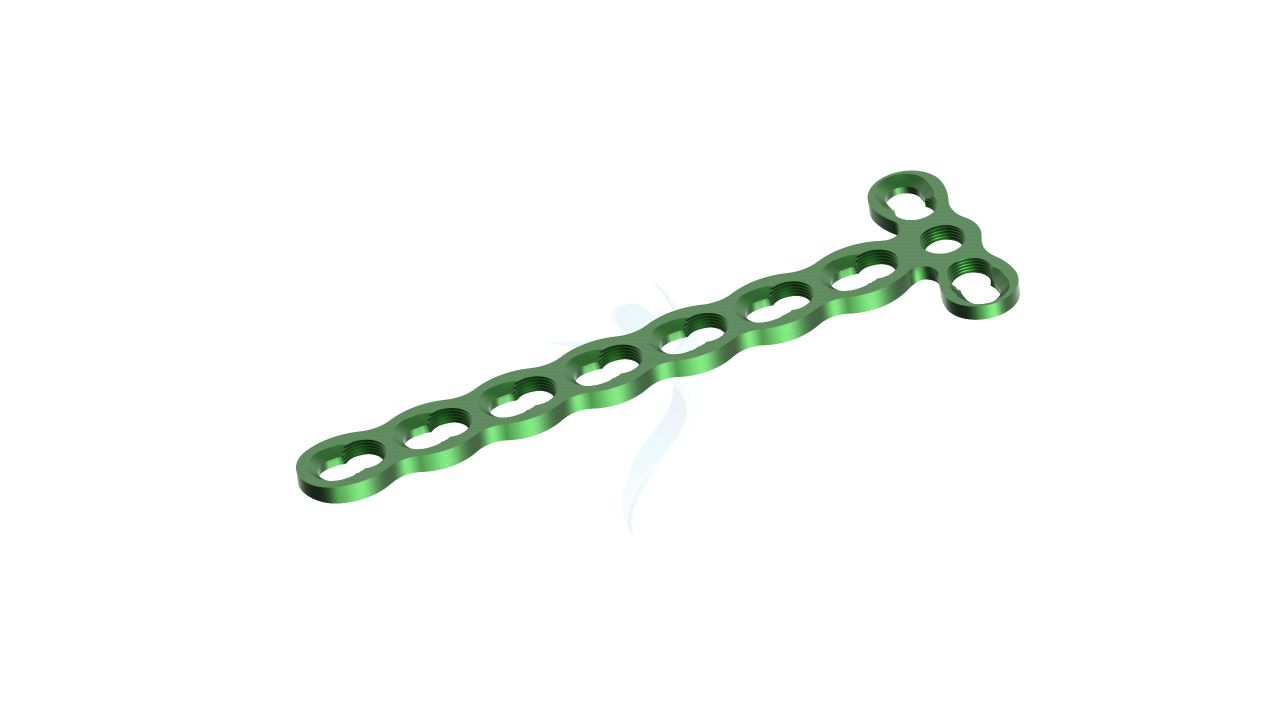
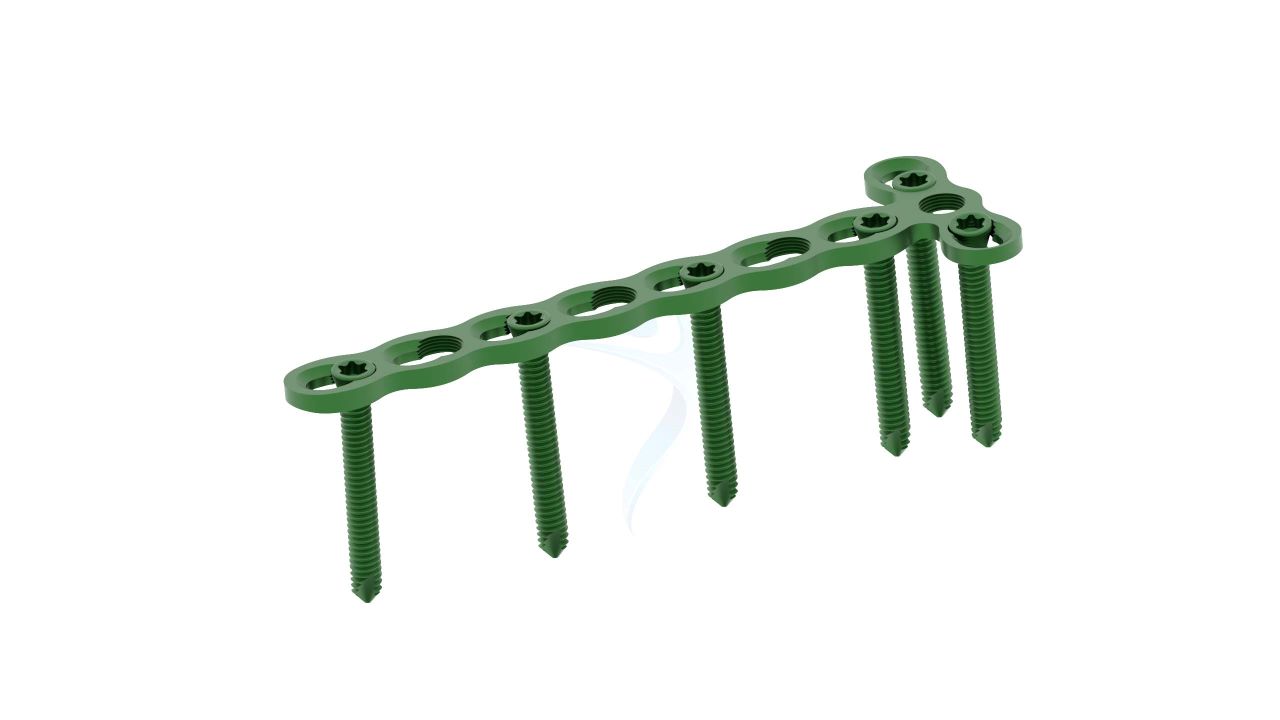
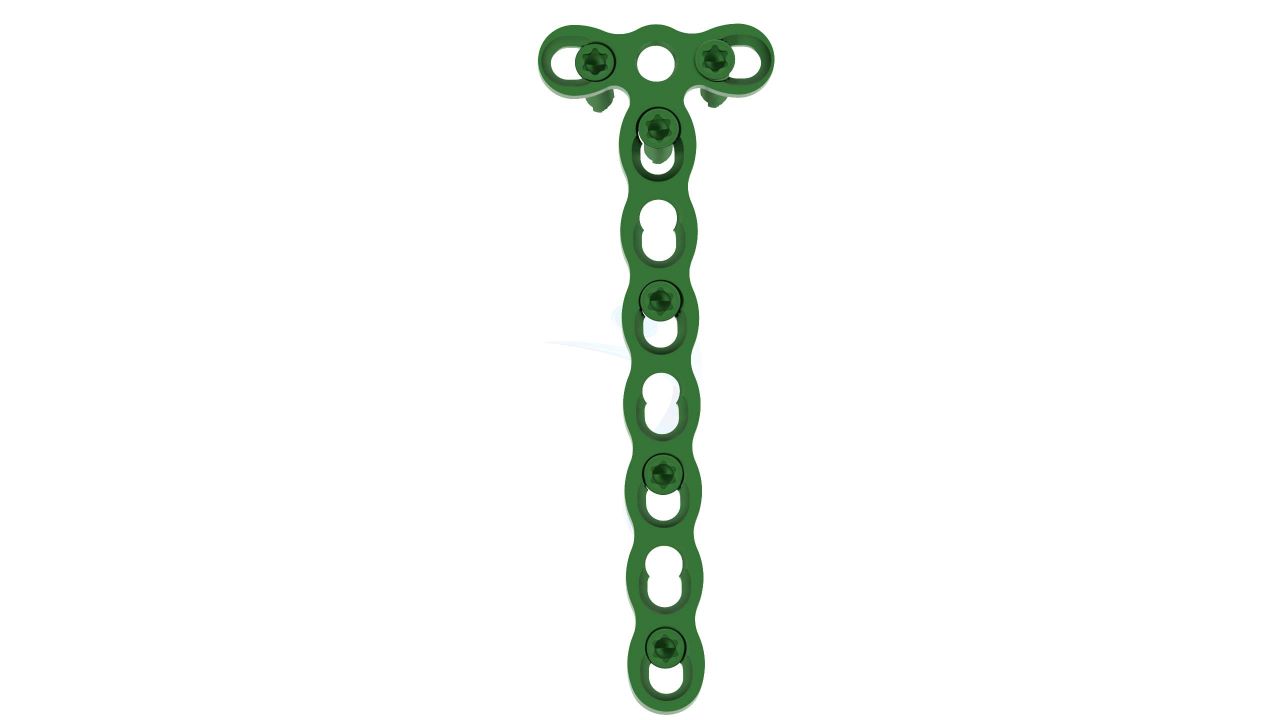

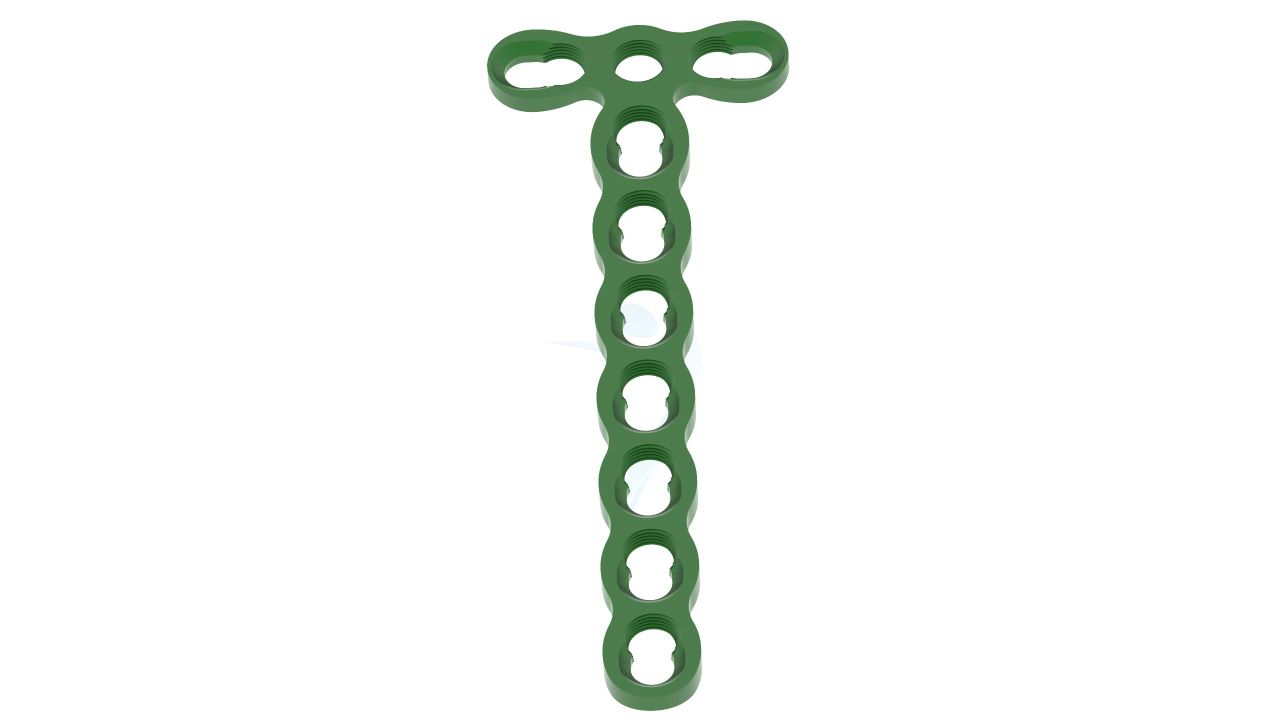
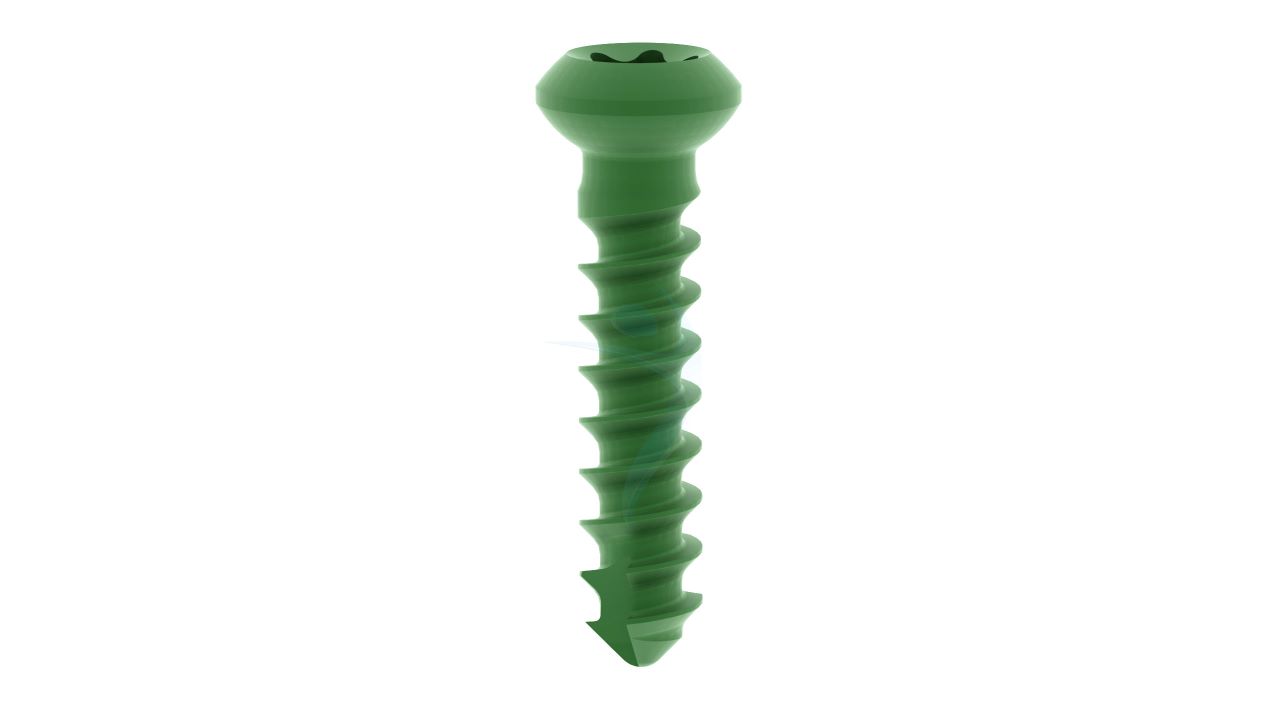
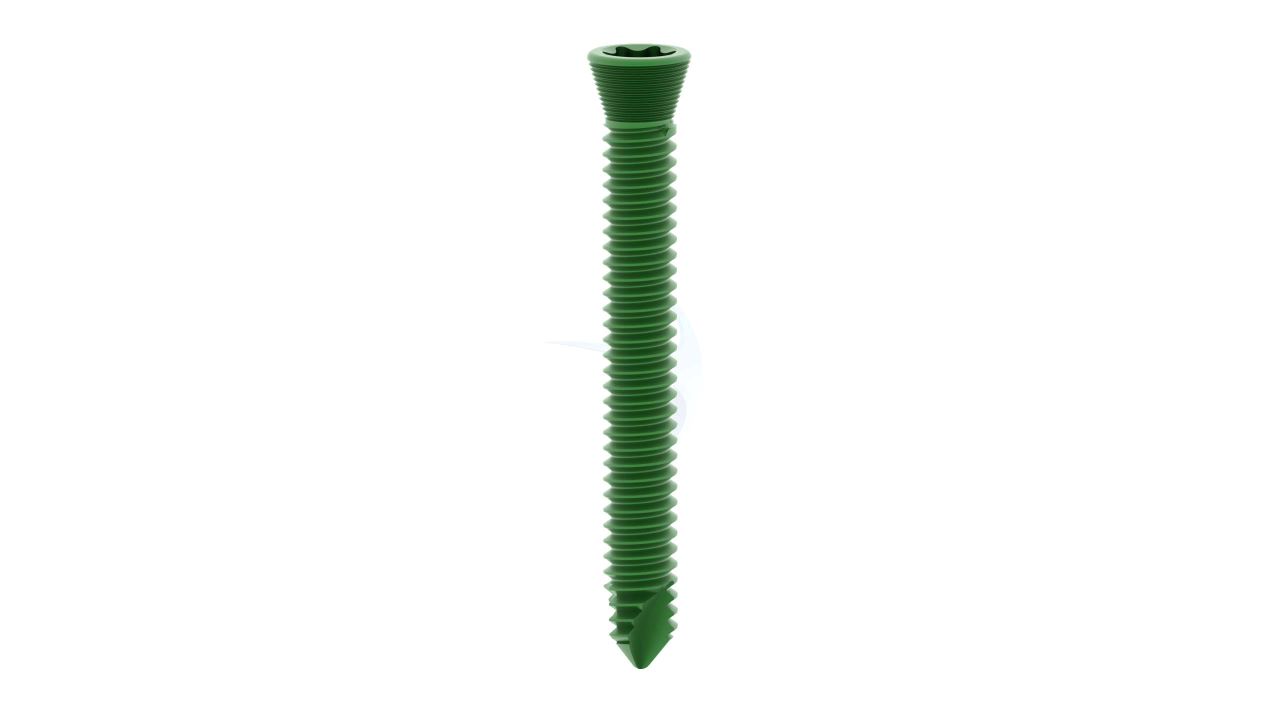
Product Uses
- Fracture Fixation : Stabilizing and immobilizing fractures of the hand and fingers, including metacarpal and phalangeal fractures.
- Malunion Correction : Correcting malunions, where a bone has healed in an incorrect position or alignment.
- Non-Union Fractures : Assisting in the treatment of non-union fractures by providing stability and promoting bone healing.
- Bone Deformity Correction : Addressing bone deformities, including angular or rotational deformities in the hand and fingers.
- Arthrodesis (Joint Fusion) : Immobilizing joints to promote fusion, often used in cases of severe arthritis or instability.
- Complex Hand Trauma : Addressing complex hand trauma involving multiple fractures or significant soft tissue damage.
Product Specification
- Dimensions : Typically measures 2.4 mm in width, tailored for precision in hand and finger procedures.
- Material Composition : constructed from biocompatible material Titanium alloy, ensuring harmonious integration with the human body.
- Unique Configuration : Distinguished by its "T" shape design, offering enhanced structural support, particularly valuable for specialized hand and finger surgeries.
- Profile Thickness :Engineered to strike a balance between strength and a discreet profile, reducing the likelihood of tissue irritation and enhancing patient comfort.
- Versatile Hole Arrangement : Showcasing a range of hole sizes, adeptly accommodating orthopedic screws for steadfast fixation.
- Interoperability : Engineered for seamless compatibility with standard orthopedic instruments and established surgical techniques.
Compact Hand Plates - 2.4 mm T Plate Sizes
Comprehensive Guide for Compact Hand Plates 2.4 mm T-Plate
- Patient Assessment : Evaluate the patient's medical history, including any previous surgeries, allergies, medications, and comorbidities.
- Imaging Studies : Review recent X-rays, CT scans, or MRI images to assess the extent of the injury or condition requiring surgical intervention.
- Patient Preparation : Inform the patient about the procedure, risks, benefits, and expected outcomes.Obtain informed consent from the patient or their legal guardian.
- Surgical Team Preparation : Assemble the necessary surgical instruments, including the Comprehensive Guide for Compact Hand Plates 2.4 mm T-Plate, sterilize them, and ensure their availability in the operating room.
- Anesthesia : Administer appropriate anesthesia based on the surgical plan and patient's condition, which may include local, regional, or general anesthesia.
- Surgical Approach : Position the patient appropriately, ensuring access to the affected hand and adequate exposure of the surgical site.
- Reduction and Fixation : Select the appropriate size and configuration of the Comprehensive Guide for Compact Hand Plates 2.4 mm T-Plate based on pre-operative planning and intraoperative assessment.
- Plate Application : Use the Comprehensive Guide for Compact Hand Plates to aid in accurate placement of the T-Plate on the bone surface.
- Closure : Close the incision with sutures or staples, taking care to achieve hemostasis and minimize the risk of infection.
- Immediate Post-operative Care :Monitor the patient in the recovery area for signs of anesthesia recovery and immediate post-operative complications.
- Post-operative Imaging : Obtain post-operative X-rays to confirm the proper placement and fixation of the T-Plate and assess the alignment of the treated bone.
- Rehabilitation and Follow-up : Develop a comprehensive rehabilitation plan tailored to the patient's specific condition and surgical outcome.
- Patient Education : Educate the patient on post-operative care instructions, including wound care, activity restrictions, and signs of potential complications.


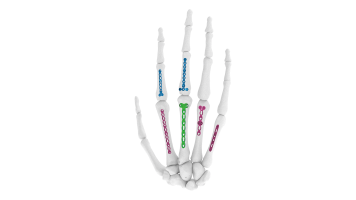



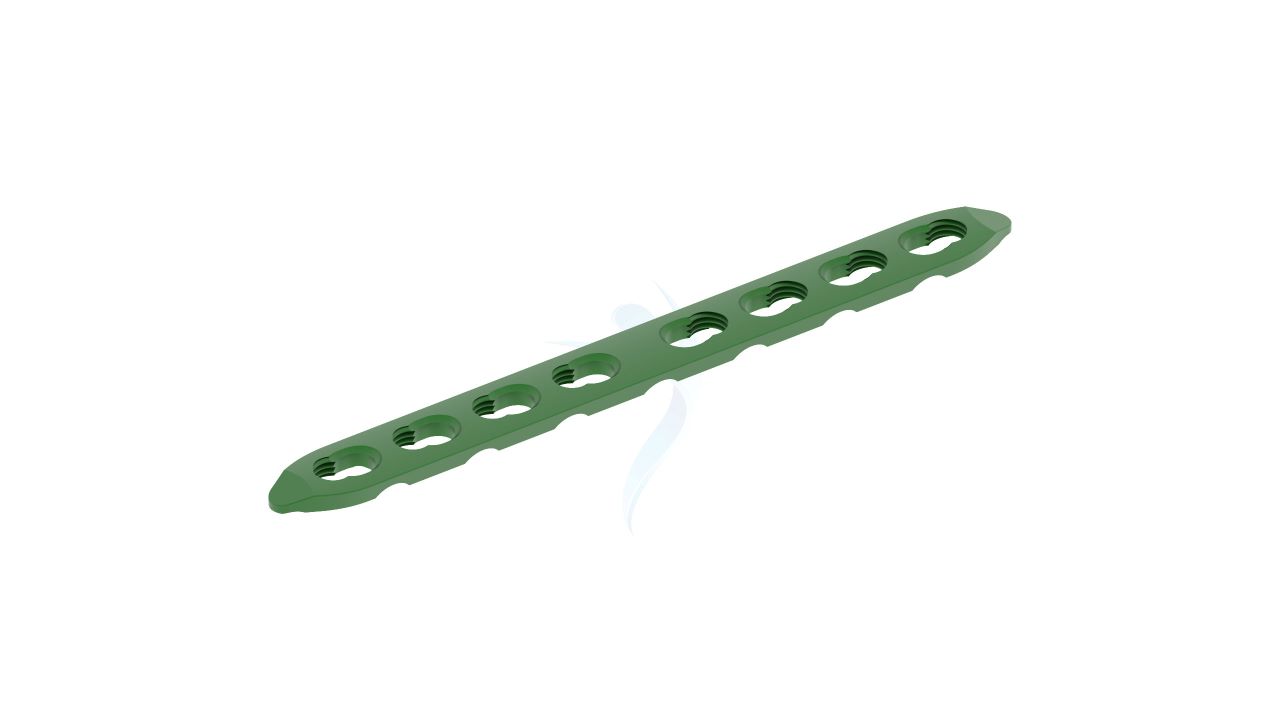
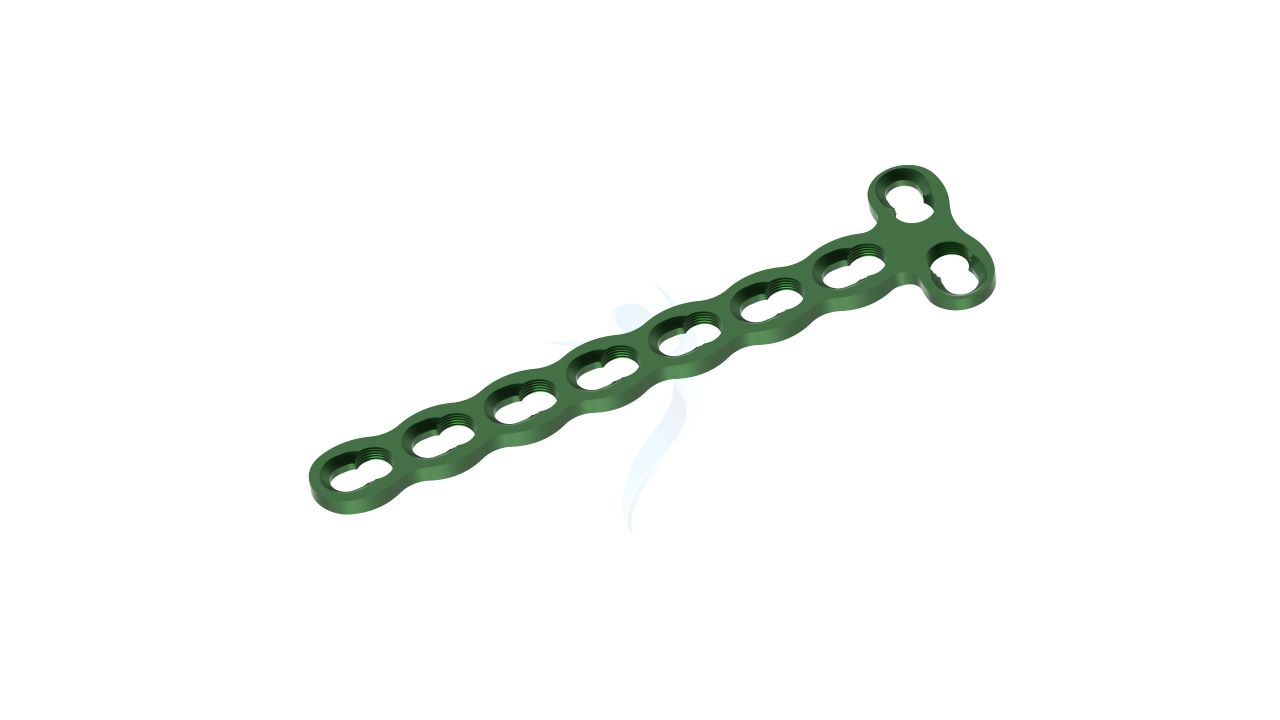
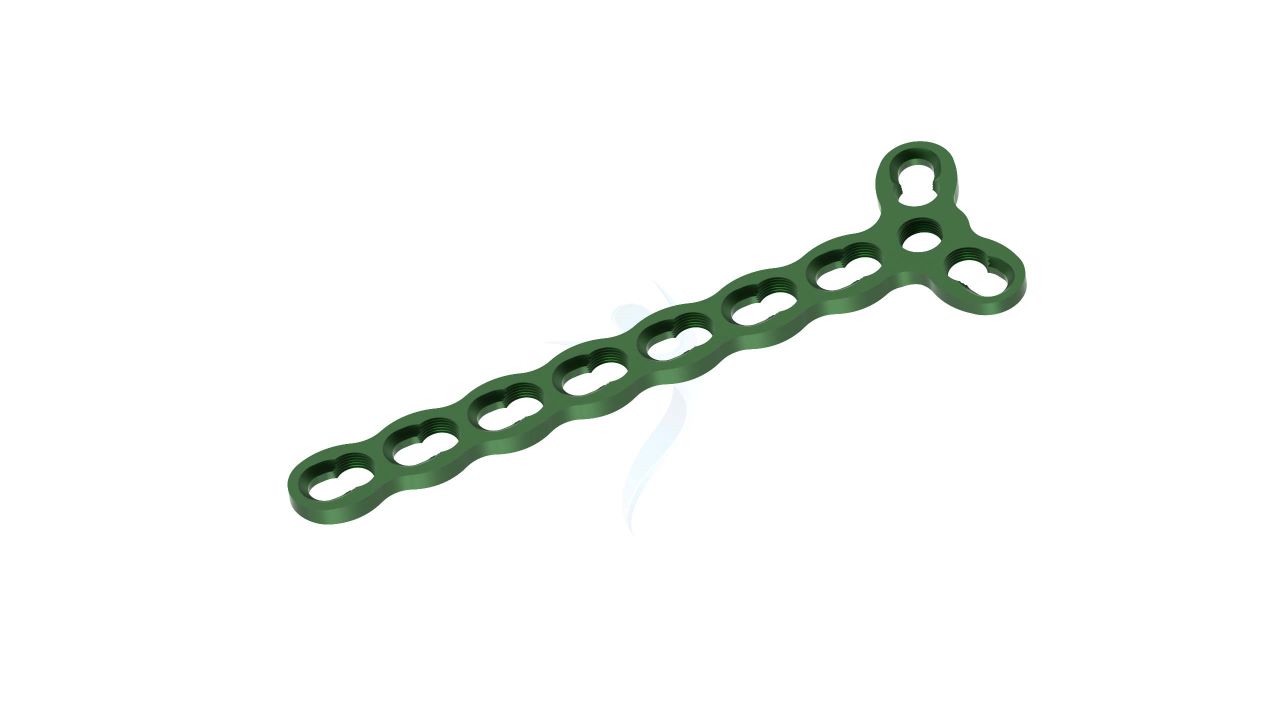

.png)

